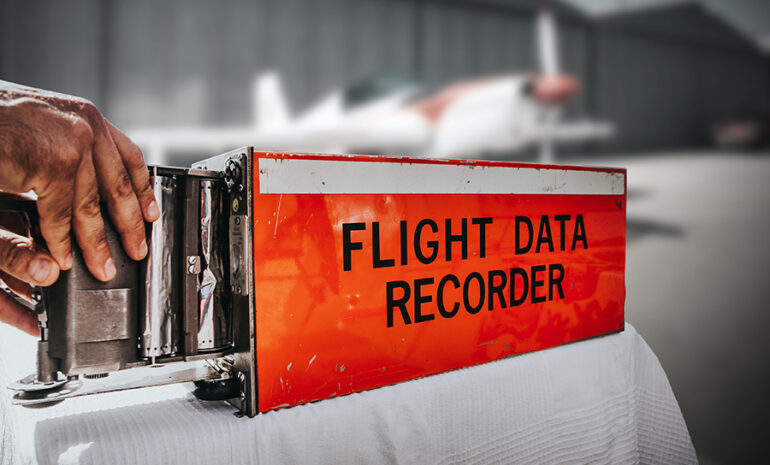Let’s take a closer look at Step 1 of flight data analysis: downloading the flight data from the aircraft. This step involves understanding the role of the Flight Data Acquisition Unit (FDAU) and the different options for collecting and using flight data.
The FDAU is responsible for determining what data is stored and how it is sent. The flight recorder itself is like a listening device that records the data sent to it. The FDAU sends various parameters important for monitoring the aircraft’s operation, such as airspeed, altitude, pitch, roll, and more. The FDAU captures more parameters than the minimum mandated by regulations, making it suitable for Flight Data Monitoring (FDM) or Flight Operational Quality Assurance (FOQA) programs.
There are two main options for collecting and using flight data: Flight Data Recorders (FDR) and Quick Access Recorders (QAR). Flight Data Recorders are crash survivable devices already installed on many modern transport aircraft and helicopters. They store data in solid-state memory and can be accessed using specialized download units. However, FDRs have limitations, such as storing a limited amount of data (typically 25 hours) and the potential challenge of accessing the recorder in the aircraft.
Quick Access Recorders (QAR) are flight data recorders that are not crash protected. They also store data in solid-state memory and capture the same data stream as FDRs. QARs have advantages such as smaller size, lighter weight, and the ability to store more data (400+ hours). They can be installed in easily accessible locations and may even offer wireless transfer options. The main drawback of QARs is the additional cost of equipping them on aircraft.
Other options include QARs with their own data acquisition units, utilizing data recorded on memory cards from avionics systems like Garmin G1000, and real-time data streaming (although less common and not widely used for FDM or FOQA purposes).
Ultimately, the choice between FDR and QAR depends on factors like the type of operation, budget, and aircraft options. Generally, if the budget allows, QARs are recommended for serious FDM or FOQA programs. However, smaller operators with less frequent flights may find FDRs to be a valid option, especially if they already have the necessary download equipment.


